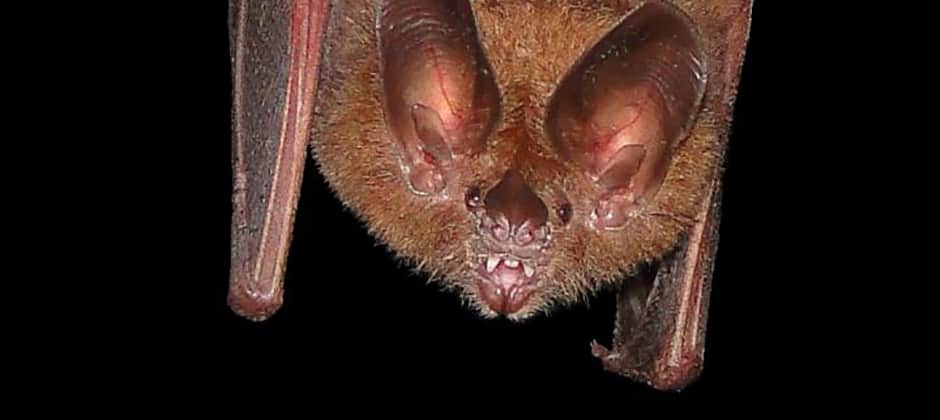Share this article
Bats bounce echolocation signals off leaves like mirrors
Bats can bounce echolocation signals off leaves — using them like mirrors — to detect stationary insects to prey on.
“It’s a pretty neat and pretty cool mechanism,” said Inga Geipel, a postdoctoral research fellow at the Smithsonian Tropical Research Institute and the lead author of a study published recently in Current Biology.
When Geipel’s PhD advisor and co-author on the paper, Elisabeth Kalko, kept coming across dragonfly wings under common big-eared bat (Micronycteris microtis) roosts in Panama, he began suspecting something was up. The bats usually hunt at night, but dragonflies are usually diurnal, staying still and quiet on leaves at night. Biologists previously thought resting dragonflies were undetectable for bats using echolocation. But the evidence seemed to suggest otherwise.
Geipel and her colleagues set out to test the ability of bats to detect dragonflies. Using a speaker and microphones to mimic echolocation sounds, they determined how signals returned from a leaf to a bat — both with and without an insect on it — from more than 500 positions at the University of Ulm in Germany.
They also tested activity in bats they captured near STRI’s Barro Colorado Island research station in Panama. They glued dead dragonflies on artificial leaves, and placed them in a cage. Then, the team recorded the bats’ activities using high-speed cameras and an array of microphones.
They reconstructed their flight paths and found that the bats always approached the prey from oblique angles. By emitting calls from oblique angles, they can’t detect leaves very well without insects on them since echolocation signals don’t bounce back to them. But they could detect even dead prey sitting on top of the leaves since the signals bounced back more strongly than those of the leaves themselves.
The study shows researchers still have a lot to learn about the ways bats use echolocation, especially while flying quickly through a Panama landscape dense with vegetation, Geipel said.
“It’s much more sophisticated than we imagine,” she said.
Photos caption: Researchers discovered that by approaching a leaf at an oblique angle, bats can use echolocation to detect stationary insects in the dark.
Header Image: Researchers discovered that by approaching a leaf at an oblique angle, bats can use echolocation to detect stationary insects in the dark. ©Inga Geipel








